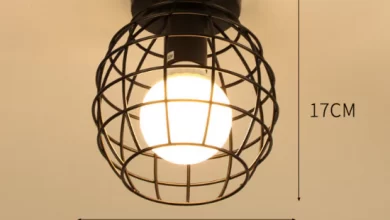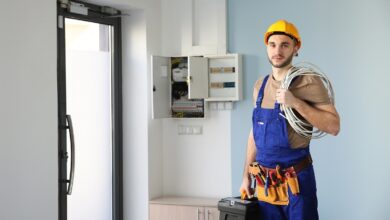Why are My Hardwood Floors Suddenly Slippery
As a proud owner of hardwood floors, you may have noticed that they no longer provide the same level of stability and traction as they used to. This unexpected change can be frustrating and concerning, especially if you have young children or elderly family members at home.
Suddenly slippery hardwood floors not only pose a safety hazard but also take away from the overall aesthetic appeal of your home. So why exactly are your once sturdy and secure floors now causing unwanted slips and falls?
I will delve deeper into the possible reasons for this issue and provide solutions on how to regain grip on your hardwood flooring. Whether you’re dealing with old or new floors, understanding the root cause is essential in finding an effective remedy. So, let’s get started on uncovering the mystery behind why your hardwoods have become slippery out of nowhere.
Reason Why Hardwood Floors Get Suddenly Slippery
Hardwood floors can become slippery for several reasons, affecting safety and comfort in your home. Identifying the underlying cause is crucial to addressing the issue effectively. It’s not just about keeping the floors safe and visually appealing; it’s also about ensuring that every aspect of the project, from conception to completion, is handled with precision and care. Engaging professional flooring takeoff services can greatly enhance the efficiency and cost-effectiveness of these projects. Here are some common reasons why your hardwood floors might suddenly feel more slippery:
Residue from Cleaning Products
Cause:
The most common reason for slippery hardwood floors is the residue left behind by cleaning products. Some cleaners can leave a film on the surface of the wood, reducing friction and creating slick spots.
Solution:
Switch to using a hardwood floor cleaner recommended by the flooring manufacturer, which is designed to clean without leaving a residue. You may also need to thoroughly clean the floors with a product designed to remove buildup.
Over-waxing or Incorrect Polishing
Cause:
Applying too much wax or polish or using products not suitable for your type of hardwood floor can create a slippery surface.
Solution:
Strip the excess wax or polish from the floor using a product specifically designed for this purpose, then reapply a thin, even layer of the appropriate wax or polish.
High Humidity Levels
Cause:
High humidity can make hardwood floors swell slightly and create a more slippery surface, especially if the wood’s finish has worn down in places.
Solution:
Dehumidifiers or air conditioning should be used to maintain a stable indoor humidity level between 30% and 50%.
Worn Finish
Cause:
Over time, the finish on hardwood floors can wear down, especially in high-traffic areas. A worn finish can become smooth and slick.
Solution:
Refinishing the affected areas or the entire floor can restore the proper texture and reduce slipperiness.
Dust and Debris
Cause:
A thin layer of dust, pet hair, or other debris on hardwood floors can significantly reduce traction, making the floors feel slippery.
Solution:
Regular sweeping, vacuuming with a hard floor attachment, and damp mopping can keep floors free of dust and reduce slipperiness.
Socks or Slippery Footwear
Cause:
Walking on hardwood floors in socks or certain types of footwear, like slippers with smooth soles, can make the floor feel extra slippery.
Solution:
Encourage household members and guests to wear shoes with non-slip soles indoors or provide house slippers with grip for guests.
Improper Installation or Floor Damage
Cause:
If the hardwood floors were not installed correctly or have been damaged (e.g., water damage, buckling), it could affect their level and texture, leading to slippery spots.
Solution:
Consult with a flooring specialist to assess and repair any installation issues or damage.
Addressing the cause of slippery hardwood floors not only improves safety but also helps maintain the beauty and longevity of your flooring. If you’re unsure of the exact cause or solution, consulting with a professional flooring contractor can provide tailored advice.
Preventive Measures for Hardwood Floors Suddenly Slippery
To prevent hardwood floors from becoming slippery and ensure they remain safe and comfortable underfoot, consider implementing the following preventive measures:
- Opt for cleaning products specifically designed for hardwood floors. These are formulated to clean effectively without leaving a slippery residue. Avoid oil-based cleaners and those that promise too much shine, as these can contribute to slipperiness.
- When mopping your hardwood floors, wring out the mop thoroughly to ensure it’s only damp, not wet. Excessive water can damage the wood and leave a slippery film. Regularly sweep or vacuum to remove dust and debris that can make the surface slick.
- If you use wax or polish, apply it sparingly. A thin coat is usually sufficient to protect the floor and enhance its appearance without making it slippery. Always use products compatible with your floor’s finish.
- Place non-slip area rugs or runners in high-traffic areas, near entrances, and in places where water spillage is likely, such as in front of kitchen sinks and dishwashers. Ensure these rugs have proper non-slip backings.
- Wear shoes with a good grip indoors, especially if the floors tend to be slippery. Alternatively, house slippers with non-slip soles should be provided for family members and guests.
- Use furniture pads under the legs of chairs, tables, and other heavy objects. This prevents scratching the finish, which can lead to slippery spots, and also makes it safer to move furniture without damaging the floor.
- Periodically inspect your floors for signs of wear and tear. Early detection of issues like warping, buckling, or finish wear can prevent them from becoming significant hazards.
- If you’re unsure about the care and maintenance of your hardwood floors, consult with a flooring professional. They can provide specific recommendations based on the type of wood, finish, and your home’s unique conditions.
By taking these preventive measures, you can help ensure your hardwood floors remain beautiful, safe, and free from slipperiness, extending their life and enhancing your home’s overall safety.
Conclusion
Slippery hardwood floors can be a frustrating and dangerous issue to deal with. While various factors may contribute to this problem, it is important to understand the root cause in order to effectively address it. From regularly cleaning and mopping your floors, using the right cleaning products and techniques, to checking for any underlying issues such as water damage or floor finish wear and tear, these are all important steps to prevent slipperiness in your hardwood floors. Whether you’re dealing with an old home or new construction, ensuring the proper care and maintenance of your hardwood floors will not only keep them looking beautiful but also ensure maximum safety for you and your family. So don’t wait until someone gets hurt. Take action now and enjoy safe, slip-free hardwood floors for years to come!


